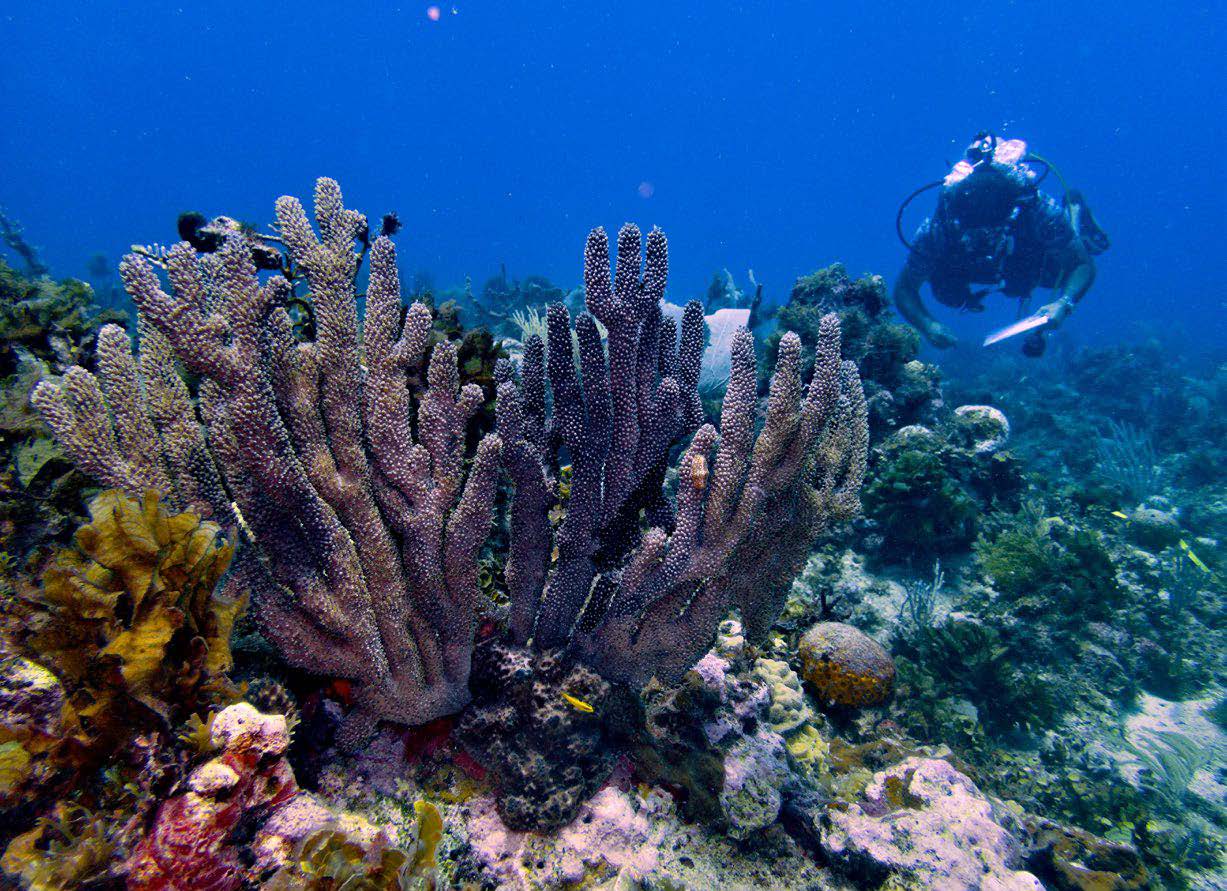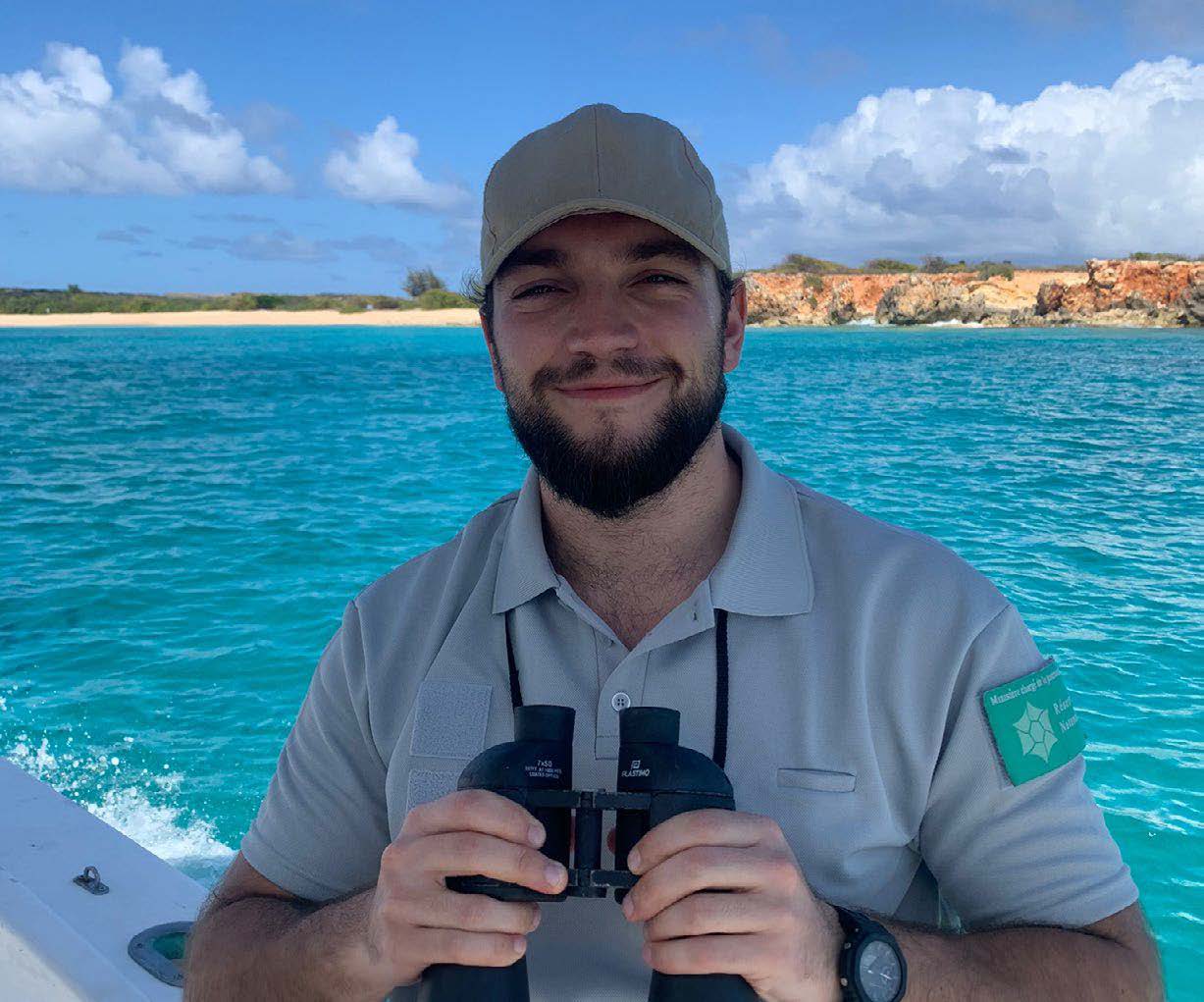Action CS1, CS3, PR2 et IP6
- Updating the cartography
- Develop and test the revitalization of coral and related species (priority 2)
- Contribute to the rejuvenation of the coral reefs and seagrass beds
- Develop and appreciate scientific collaborations (priority 1)
As part of the ReCorEA project launched by the French Office for Biodiversity (OFB) to monitor the resilience of coral reefs and their associated ecosystems (seagrass beds and mangroves), the Réserve Naturelle hired Clément Bonnardel as head of the project. His priorities are the revision and reinforcement of the mooring zone and its lighted buoys. The project comprises four phases.
Preliminary Phase
The first phase is to update the maps, which date from the early 2000’s, of the terrestrial and maritime zones of the Réserve Naturelle, as well as create a map for the adjacent zones outside of the Réserve: Grand-Case, Anse Marcel, Cul-de-Sac, and Orient Bay… The map of these terrestrial and underwater habitats is based on an automated computer program that relies on satellite images. To do so, current field surveys done by the head of the project and the entire management staff will be used to characterize and localize robust samples of the existing habitats: sand, mangrove, coral reef, seagrass beds... These new maps will also indicate the number of boats that visit these zones, as well as the evolution of the coastline, and the existence of turbid zones of murky water caused by runoff from ravines or gray water, diverse pollution, or due to the decomposition of sargassum seaweed.
At the same time, the head of the project will survey marine professionals, recreational boaters and fishermen, in order to grasp their perception and their needs in terms of traffic within the Réserve and the mooring zone. Nautical traffic is also characterized directly on site by monitoring the number of boats by class, size, and the nature of their activities.
The goal is to define a fruitful strategy based on a compromise between the conservation of the habitats, the maximum number of boats (commercial and recreational), and reasonable supervision of users.
Management Phase
As a result of the preliminary phase, the deployment of the new mooring zone can happen: reinforcement of the existing area and installation of new ones. This will be accompanied by a new set of regulations covering practices throughout all protected areas, in order to ensure the effectiveness of the program and the conservation of marine habitats.
Monitoring Phase
Before, during, and after the deployment of the mooring zone, various monitoring systems will be in place to evaluate the initial state and evolution of the three main habitats involved in the ReCorEA project: mangroves, seagrass beds, and coral communities. This will make it possible to evaluate and monitor these habitats over time.
Awareness Phase
An essential aspect of the project, an awareness campaign has already started, most notably during “the day for those who missed out on vacation”, which allowed 300 children from Saint Martin, Sint Maarten, Anguilla, and Guadeloupe to discover the ecological richness in the Baie de l’Embouchure with the Réserve. The campaign will continue in all of the schools in Saint Martin.
The goal is to raise awareness about the richness and fragility of these indispensable ecosystems in order to facilitate acceptance and adhesion to the new management regulations for activities within the Réserve Naturelle Nationale de Saint-Martin. Financed by the French Office for Biodiversity, the ReCorEA project also receives support from the Fondation Véolia Environnement and from Atout France.


















